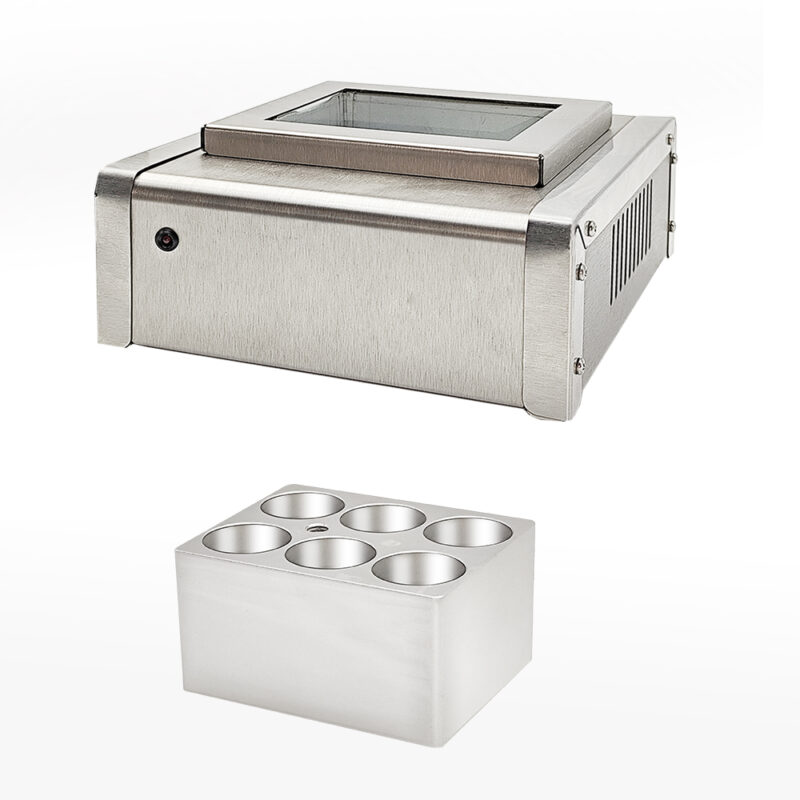
A thermostatic dry bath with potentiometer control and dual-feedback functionality is a high-precision temperature-control device commonly used in laboratories. Below is a detailed introduction:
Working Principle
-
Potentiometer Principle
A potentiometer is an adjustable electronic component consisting of a resistive element and a rotating or sliding mechanism. When a voltage is applied across the two fixed terminals of the resistive element, rotating or sliding the wiper changes its position on the resistor. This produces a voltage between the wiper and the fixed terminal that correlates with the wiper’s position, allowing regulation of voltage or current in the circuit. -
Dual-Feedback Principle
Dual-feedback combines multiple feedback mechanisms, typically based on negative-feedback control. In a thermostatic dry bath, the temperature sensor monitors the actual temperature and converts it into an electrical signal for the controller. The controller compares the set value with the feedback value and adjusts heating or cooling output based on the error. A portion of the output voltage or current is fed back to the input through the feedback network, affecting the net input signal and stabilizing the output. -
Overall Operation
The user sets the desired temperature through the potentiometer, which outputs a corresponding voltage signal to the temperature controller. The controller compares the set voltage with the sensor’s feedback voltage representing the actual temperature. If the actual temperature is lower than the set temperature, the controller increases heating power; if higher, it decreases heating power. Meanwhile, the dual-feedback mechanism continuously monitors and adjusts the system to maintain the temperature close to the preset value.
Features
-
High Temperature-Control Accuracy
The dual-feedback function provides real-time monitoring and adjustment, while the potentiometer allows precise temperature setting. Together, they deliver high control accuracy with minimal error. -
Excellent Stability
The negative-feedback mechanism gives the system self-regulating capability, effectively suppressing temperature fluctuations. Even under external environmental changes or internal parameter drift, the system maintains stable temperature output. -
Easy Operation
The potentiometer is simple to operate. Users can set the temperature easily by rotating or sliding it—no complicated procedures required.
Applications
Widely used for incubating, boiling, deactivating, wet digestion, sample concentration, enzyme preservation and reactions, DNA amplification, electrophoresis pre-denaturation, serum coagulation, and more. It is applicable in pharmaceuticals, chemicals, food safety, quality inspection, environmental testing, and various other fields.

